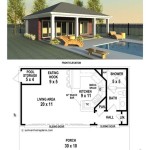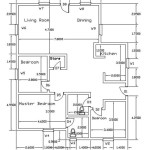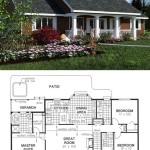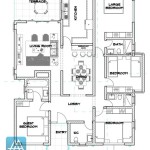Farmhouse Table Plans for the Home Woodworker
The farmhouse table, with its sturdy construction, timeless design, and welcoming presence, has become a staple in modern homes. Its enduring popularity stems from its versatility, adaptability, and ability to seamlessly blend into various interior styles. For the home woodworker, crafting a farmhouse table presents an exciting opportunity to showcase woodworking skills and create a bespoke piece that reflects personal style and craftsmanship. This article provides an in-depth guide to designing and building farmhouse tables, offering practical tips and detailed instructions for a successful project.
Choosing the Right Wood for Your Farmhouse Table
Selecting the appropriate wood is crucial for the longevity and aesthetic appeal of your farmhouse table. Consider the following factors when making your choice:
- Durability: Hardwoods such as oak, maple, walnut, and cherry are renowned for their strength and resistance to wear and tear. These woods are excellent choices for high-traffic areas and families with young children.
- Aesthetics: Each wood species possesses unique grain patterns and colors. Oak, for example, boasts a prominent grain pattern, while maple features a more subtle grain with a warm, creamy hue. Walnut offers rich brown tones and intricate grain, while cherry exhibits reddish-brown hues that darken with age.
- Budget: Hardwoods tend to be more expensive than softwoods. However, consider utilizing reclaimed wood or less expensive hardwoods like pine or ash for a budget-friendly option.
- Availability: Ensure the chosen wood is readily available in your local area. This simplifies the wood sourcing process and reduces transportation costs.
Remember to choose wood that is properly seasoned and kiln-dried to minimize warping and cracking during construction.
Designing Your Farmhouse Table: Dimensions and Style
Before embarking on the construction process, meticulously plan the table's dimensions and style. This includes the following considerations:
- Tabletop Size: Determine the desired length and width of the tabletop based on the intended seating capacity and available space. A standard farmhouse table is typically 6 to 8 feet long and 3 to 4 feet wide.
- Tabletop Shape: Choose between a rectangular, square, or round tabletop shape. Rectangular tables are the most common choice for farmhouse designs, while square and round tables provide a more intimate dining experience.
- Table Legs: Select the desired style and construction method for the table legs. Farmhouse tables often feature straight, tapered, or pedestal legs made from solid wood or turned wood.
- Table Base: Decide on the type of table base, either a simple apron or a more elaborate stretcher design. Aprons provide structural support, while stretchers enhance stability and add a visual element.
- Tabletop Thickness: Choose a tabletop thickness between 1.5 and 2 inches for durability and stability.
Utilize free online design tools or sketching software to visualize various table designs before committing to a final plan.
Construction Techniques and Tools for Farmhouse Tables
Constructing a farmhouse table requires a combination of woodworking techniques and tools. Familiarize yourself with the following fundamental steps and tools:
- Cutting and Shaping: Use a table saw, chop saw, or miter saw to accurately cut the wood pieces to the required dimensions. Employ hand tools like chisels and planes for shaping and smoothing the wood.
- Jointing and Gluing: Ensure flat, even surfaces before gluing the tabletop boards together. Utilize a jointer or planer to create a smooth surface for bonding. Use wood glue to fasten the boards securely and allow ample drying time.
- Table Leg Construction: Depending on the design, use traditional mortise and tenon joinery or modern techniques like pocket holes for attaching the table legs to the apron.
- Assembly: Fasten the table legs to the apron using screws or bolts, ensuring proper alignment and stability. Use clamps to secure the components during assembly.
- Finishing: Apply a suitable finish, such as oil, varnish, or paint, to protect the wood and enhance its natural beauty. Sanding the table before finishing will ensure a smooth and even application.
Remember to practice safety precautions when using tools and machinery. Wear safety glasses, hearing protection, and appropriate clothing to prevent accidents.
Additional Tips for Farmhouse Table Construction
Here are additional tips to aid in the construction of your farmhouse table:
- Plan ahead: Create a detailed blueprint or drawing of the table design, including all dimensions and joinery details. This will streamline the construction process and minimize errors.
- Use accurate tools: Invest in quality hand tools and power tools to ensure precision in cutting, shaping, and assembly.
- Dry fit: Before applying glue, dry fit all components to ensure proper alignment and fit. This prevents mistakes and allows adjustments as needed.
- Use clamps: Securely clamp the components during glue-up and assembly to prevent warping or shifting. Use a variety of clamps to suit different joints and shapes.
- Choose a suitable finish: Consider the desired look and level of protection when selecting a finish. Oil finishes enhance the wood's natural grain and provide a warm sheen, while varnish offers a durable, protective layer.
By carefully planning, meticulously executing the construction steps, and utilizing quality tools, you can build a farmhouse table that will be a cherished heirloom for generations to come.

Rustic Farmhouse Table With Breadboard Ends A Free Diy Plan Edhart Me

Farmhouse Table Updated Pocket Hole Plans Ana White

Project Modern Farmhouse Table Front Life

Diy Farmhouse Dining Table Woodworking Plans

Farmhouse Table Bench Woodworking Project Woodsmith Plans
:max_bytes(150000):strip_icc()/decor-and-the-dog-farmhouse-table-56af6cc05f9b58b7d018acf1.jpg?strip=all)
14 Free Diy Woodworking Plans For A Farmhouse Table

Diy Farmhouse Table Free Plans Rogue Engineer

Beginner Farm Table 2 Tools 50 Lumber Ana White

How To Build A Farmhouse Table

Diy Farmhouse Table Free Plans Rogue Engineer
Related Posts








